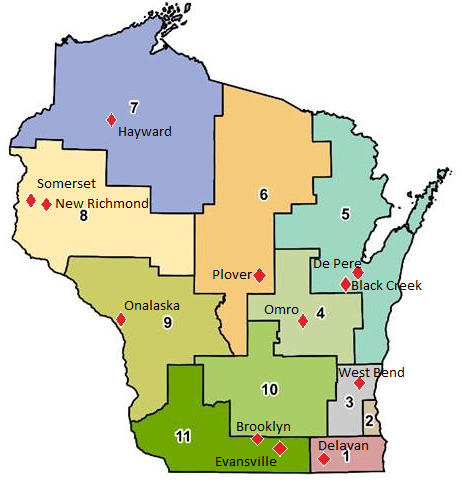Here we present the twelve case study communities, moving from region 1 to region 11 around the state. Note that we do not include region 2 as our funding for the case studies emphasized rural and smaller town places.
Following the presentation of the case studies, we will provide some comparative analyses.
How to Read the Case Studies
Our goal in these case studies is not to provide a complete description and analysis of each community. Instead, our focus is on identifying the variables in each community that seem to influence the presence of young adults. In addition, we wanted short, easily digestible presentations accessible for a wide audience. To learn more about how we did the research and why we chose the approach we did, please see the Stage 2 chapter.
- Case Studies
- Delavan
- West Bend
- Omro
- De Pere
- Black Creek
- Plover
- Hayward
- Somerset
- New Richmond
- Onalaska
- Brooklyn
- Evansville

Each case study begins with a table of basic information about the community. Most items will be self explanatory, but two items may need some elaboration. The "young adult gaining measure" is a measure of how much the young adult population aged 20-39 changed relative to itself from 1990-2010. The "young adult maintaining measure" is a measure of the average proportion of the population that was aged 20-39 across the three time periods of 1990, 2000, and 2010. We include the median figures for all 1880 communities in Wisconsin for comparison purposes.
We then provide a brief outline of the research process in the community, and list the interview questions used in each community. Because we wanted the research results to be relevant to each local community, the interview questions are not the same across all the communities, but there is significant overlap.
Then we move into the main body of the report, first providing some basic information on the people we interviewed and then their responses to the interview questions. That is followed by a section comparing the community to other communities that may be similar in important ways, and then a "So What" section discussing some of the implications of the research results for that specific community. We added the "So What" section at the urging of a number of core group participants who wanted us to explore the implications of our research more.
 Applied Population Lab
Applied Population Lab